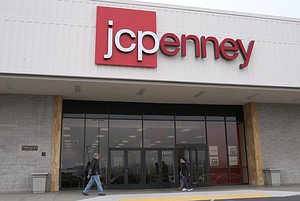Every week I’m interacting with more and more e-commerce professionals who’s day to day job is coming up with the best methods of delivering OmniCommerce solutions for their customers. One thing I can say is there’s alot of angst and confusion out there, so I thought it might be helpful to share some of the best practices, opinions and trends that seem to be emerging.
Those of you who know me are aware of my work in coining and developing the ‘Matrix Commerce’ concept, however I’m sure you’ll have noted today that I’m using term OmniCommerce. This is simply a reflection of blunt reality, before any firm can even think of accomplishing a full Matrix Commerce implementation, they and their organizations have to master and implement the basics of OmniCommerce logistics. Think of how mountain climbers get to the summit of Mount Everest, the first step in that trek is to get to Base Camp and when it comes to implementing Matrix Commerce in your organization, the first step or Base Camp is to effectively implement OmniCommerce.
Simply put OmniCommerce is allowing your customers to effectively access, research and purchase your products in any manner they choose PC, mobile, tablet, kiosk, virtual store, in-store; and then deliver them, or have them available for pick up, when and where your customer would like. To do this you need to ensure that at ALL locations where stock is held or displayed for retail sale ACCURATE and TIMELY inventory information. Without this you don’t have a hope of delivering even a basic level of satisfactory omnicommerce customer experience.
As this post is about the logistics strategies to support Omnicommerce I will not deal with the front end ordering or online technology, but rather the logistics surrounding where product will be stocked, picked and shipped from for either delivery or pick up by your customers.
The major models being utilized to date are:
National Fulfillment Centre
Regional Fulfillment Centres
Ship From Distibution Centre
Ship From All Stores
Regional Hub Stores
Pick Up Centres and/or Lockerboxes
Direct From Drop Ship From Vendors
Each of the above will be briefly explained and then we’ll touch on some of the potential advantages and disadvantages of each approach. And of course it is important to note that the above are not mutually exclusive and many retailers will utilize a combination of approaches to support their online clients.
National Fulfillment Centre
To date this has been the most widely used model
Regional Fulfillment Centres
As customer’s continue to demand more rapid delivery service levels we are seeing an increase in
Ship From Distibution Centre
Although not optimal some have chosen to utilize their existing distribution centres to service e-commerce business.
Ship From All Stores
Some retailers rather than introduce a fulfillment centre or ship from their distribution centres have decided to ship their online orders directly from the closest store to the end customer.
Regional Hub Stores
Recently we have seen the emergence of Hub Stores (The Gap) (article link)
Pick Up Centres and/or Lockerboxes
One variant on traditional online delivery models is the introduction and use of Pick Up Centres or lockerboxes
Drop Ship From Vendors
As many online sellers seek to expand their assortment and cover more product categories in their online offerings they shift to an “endless aisle” model where products are listed on their site and kept in inventory at the original vendor’s warehouse. As soon as a product is sold on the website, the order is passed along to the vendor who then Drop Ships the product to the end consumer.
 The typical industrial-era organization is like a battleship. Hundreds or thousands of people onboard, and most of them are essential–but most of them aren’t actually directly responsible for the work that we hired the battleship to do. Without the fuel people, the navigation team, the folks in the med corps and on and on, it doesn’t work.
The typical industrial-era organization is like a battleship. Hundreds or thousands of people onboard, and most of them are essential–but most of them aren’t actually directly responsible for the work that we hired the battleship to do. Without the fuel people, the navigation team, the folks in the med corps and on and on, it doesn’t work.


 Customer demands for more rapid and cost effective e-commerce delivery seem to be increasing on a daily basis. In fact not a week goes by now without my speaking with retailers and etailers that since the dawn of e-commerce have successfully serviced Canada from one fulfillment operation for the country and are currently rethinking this model.
Customer demands for more rapid and cost effective e-commerce delivery seem to be increasing on a daily basis. In fact not a week goes by now without my speaking with retailers and etailers that since the dawn of e-commerce have successfully serviced Canada from one fulfillment operation for the country and are currently rethinking this model.

